 THE GATEHOUSE
THE GATEHOUSE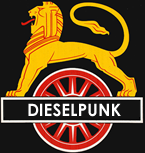
“Two Flavors of Dieselpunk”
By N. Ottens (15 July 2008)
While discussing the “dark side of dieselpunk,” the author of the dieselpunk blog, The Flying Fortress,1 coined the phrases “Ottensian” and “Piecraftian” dieselpunk to refer to genre fiction set, respectively, either in a pre- or post-nuclear environment. Where The Flying Fortress has the “Piecraftian” begin with the Atomic Age, Mr. Piecraft and myself rather consider World War II the divide between the two types of dieselpunk.
Ottensian dieselpunk
The “Ottensian” dieselpunk, named so based upon my view of the genre as outlined in the article, “The darker, dirtier side,” depicts nuclear weapons, if at all, only as an experimental technology.1 As such, The Flying Fortress makes the pre- and early-World War II era its realm; with no Great Depression having occured in this alternate history, a time defined by seemingly unstoppable progress and unfaltering faith in the future. With skyscrapers being erected in deco style and zeppelins still gracing the skies, it is perhaps the most attractive kind of dieselpunk, and certainly the most optimistic.
The “Ottensian” dieselpunk therefore shares themes and aesthetic what with is nowadays considered retro-futurism; that is, an enthusiasm for the predictions about the future produced throughout the 1930s and 1950s. In dieselpunk, these predictions come true, though it is not the future but the era in which they were produced which is remodeled accordingly. Paramount Picture’s Sky Captain and the World of Tomorrow (2004) represents probably most obviously the “Ottensian” dieselpunk, featuring pulp-inspired adventure and retro-futuristic aesthetic in an almost utopian world.
Yet uncertainty and fear loom menacingly on the horizon, and where dystopian elements are practically inherent to dieselpunk, the “Ottensian” has a darker side too. Examples, such as the 1994 film, The Shadow and the Japanese animated television series, The Big O, display much greater film noir influence, imitating not the adventure tales in the vain of Indiana Jones but the hard-boiled detective stories which were a staple of pulp fiction.2
Piecraftian dieselpunk
The “Piecraftian” dieselpunk is truly the gloomy side of the genre. Though the “Ottensian” may occasionally venture into darker territory, there is always a glimmer of hope. The “Piecraftian,” however, is, in the words of Mr. Piecraft himself, “more of a continual dystopian view” in the vain of George Orwell’s Nineteen-Eighty-Four.3 In this world, the Second World War is either still being fought as a prolonged Cold War, or has been won by the Axis Powers.4 Philip K. Dick and Robert Harris presume the latter in their novels, The Man in the High Castle (1962) and Fatherland (1992), which both suggest the continuation of Nazi-Germany’s advanced rocketry and airplane programs; The Man in the High Castle even describes the Nazis as, “bustling robotic factories across the solar system.”
Where the “Ottensian” can be both near-utopian as well as dark, Mr. Piecraft describes two different kinds of his dieselpunk too, determined by the outcome of the war: “either a world in which the enemy of ruling authoritarian state [is] a controlling force, unveiling a truly hopeless dystopian future reminiscent of Nineteen-Eighty-Four or Brazil, or the post-apocalyptic outcome seen in such movies as Six-String Samurai and Mad Max.”3 Or, in the words of The Flying Fortress, depicting society “after all the bombs have dropped.”1 Mad Max perhaps best exemplifies the post-apocalyptic “Piecraftian” dieselpunk, set in a world on the verge of collapse that survives entirely by petroleum-based technololgy.
Conclusion
Elaborating upon the observations of The Flying Fortress about the genre, we have established two kinds of dieselpunk, differing in setting, style and influence. The “Ottensian,” of which Sky Captain and the World of Tomorrow (2004) is representative, is typically set in a 1930s that was never bothered by a Great Depression and is therefore more of a continuation of the Roaring Twenties; its optimism and excitement only strengthened by further progress. This buoyant and most pervasive of “Ottensian” dieselpunk shares its era with more film noir-styled, hard-boiled detective stories such as The Shadow (1994) and The Big O, which depict the negative effects of the era’s laissez-faire attitude: the rise of totalitarianism, technocratic perception, and the “grit and oil [and] dust and mud”5 of pollution.
On the other side of World War II we find the “Piecraftian” dieselpunk, shaped by an alternate outcome of the war: often Axis victory but sometimes a three-way Cold War reminiscent of Nineteen-Eighty-Four. Either way, the war is typically depicted as having been prolonged with advanced technologies based upon real-world Nazi experiments with rocketry, jet aircraft, and eugenics and the occult. Sometimes the “Piecraftian” is set during the later stages of the war, as is the case with video games like Return to Castle Wolfenstein (2001) and War Front: Turning Point (2007). Often, however, it is characterized by dystopia and nuclear paranoia, and the development of evermore agressive technologies of war and the conquest of space by Nazi-Germany—in Philip K. Dick’s The Man in the High Castle (1962) and Energia Productions’s Iron Sky (2008).
Finally, the darker side of the “Piecraftian” is truly hopeless, for in the post-apocalyptic environments of Mad Max (1979), Radioactive Dreams (1985), Yukito Kishiro’s Battle Angel Alita and Kevin Costner’s Waterworld (1995), there is no chance of recovery, no hope for a better future; only an everlasting struggle for survival.
1. “The dark side of dieselpunk,” The Flying Fortress (4 June 2008)
2. Shimura, Shinichi, “Anime rebel with a cause: The Big O’s Keiichi Sato,” AnimePlay #5 (2004)
3. Ottens, Nick & Piecraft, “Discovering Dieselpunk,” Gatehouse Gazette #1 (July 2008)
4. Piecraft, “Dieselpunk” (20 April 2006)
5. M. Bruno, “Interview: Misguided Games’ Lewis Pollak, on Children,” GamingReport.com (2001)
Please select one of the titles listed below to proceed to your article of choice.
• “The darker, dirtier side,” by N. Ottens (2008)
In which we seek to define the genre of dieselpunk by studying its major influences and proposing several characteristics typical of dieselpunk fiction.• “Quintessential Dieselpunk,” by N. Ottens (2008)
In which we further scrutinize the features of the genre by examining a number of its quintessential works of fiction.• “Two Flavors of Dieselpunk,” by N. Ottens (2008)
In which we introduce the two proposed categories of dieselpunk: the optimistic “Ottensian” and the dark, sometimes post-apocalyptic “Piecraftian”.• “What’s Biopunk?,” by N. Ottens (2008)
In which we discuss the history and characteristics of the proposed sub-genre of biopunk to ascertain whether it is a separate genre.

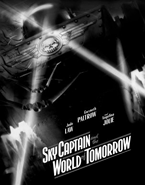
Sky Captain and the World of Tomorrow, “Ottensian” dieselpunk? Paramount Pictures (2004)
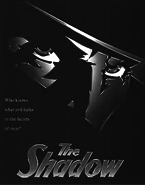
The Shadow, the dark “Ottensian”? Universal Pictures (1994)
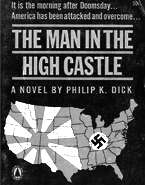
Philip K. Dick, The Man in the High Castle (1962)
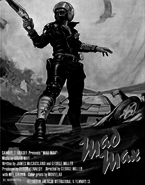
Mad Max, post-apocalyptic dieselpunk. Village Roadshow Pictures (1979)